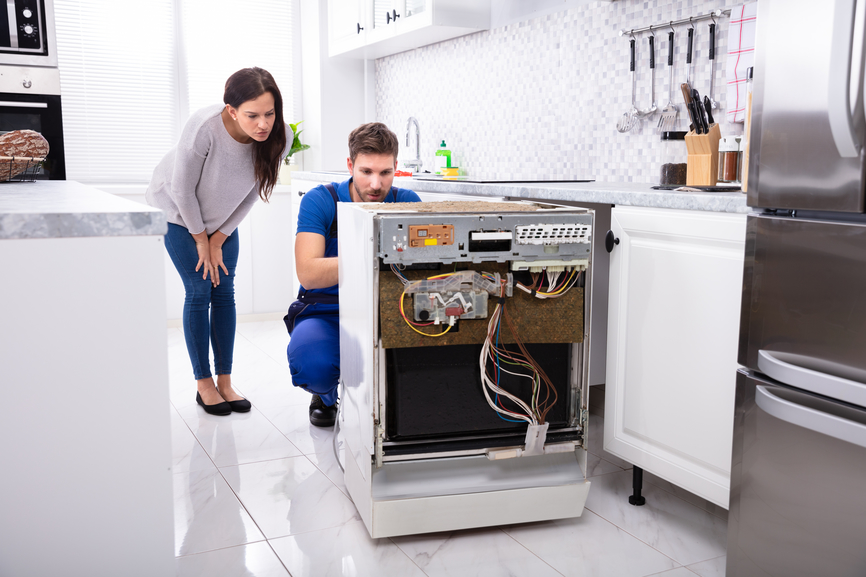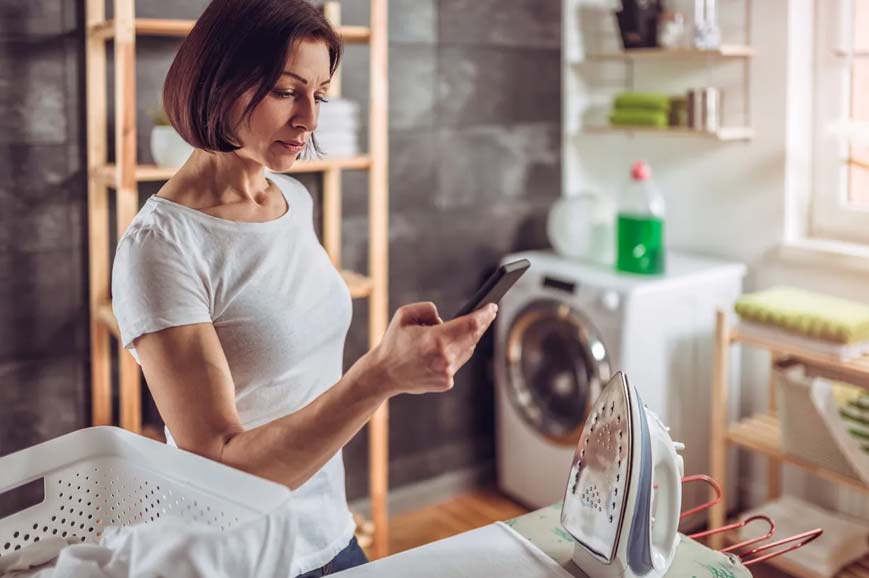Pros, Cons & Best Practices – Dependable Refrigeration & Appliance Repair Service Washing Machine Repair
The Ultimate Guide to Recognizing Device Fixing in the house
When your fridge stops cooling down or your stove rejects to heat, it can feel overwhelming. Recognizing appliance fixing at home can save you time and cash. You'll discover to identify signs and symptoms, use crucial tools, and comply with an organized troubleshooting process. Prior to you begin, there are crucial safety precautions you need to take into account. What are the most typical issues, and just how can you fix them? Allow's discover the basics.
Typical Device Troubles and Their Signs and symptoms
When your devices start acting up, it's important to recognize the signs beforehand. Overlooking them can bring about larger issues and expensive repair work. If your refrigerator isn't cooling properly, you may see cozy spots or condensation forming. This might suggest a stopping working compressor or a blocked vent.Your dishwasher might reveal issues through dirty dishes or unusual sounds throughout cycles. If you hear grinding or clanking, it's time to investigate.A washing maker that will not spin or drain can leave you with soaked laundry, recommending a clogged up drainpipe or a malfunctioning pump.Lastly, if your oven's temperature level seems off or it takes forever to preheat, you could be dealing with a malfunctioning thermostat. By staying alert to these signs, you can address concerns before they intensify right into significant repair work.
Essential Tools for Device Fixing
When you're tackling appliance repair work in your home, having the right tools is necessary. Standard hand devices like screwdrivers and pliers will assist you disassemble and fix various home appliances, while electrical testing gadgets ensure you're functioning securely with wiring. Let's go over what you need to get going on your repair work journey.
Basic Hand Tools
Having the right tools is important for effective home appliance repair service in your home. Begin with a reliable screwdriver collection, including both flathead and Phillips kinds, as screws are common in appliance setting up. Pliers are likewise important; they aid with gripping, twisting, and reducing cables or small elements. A pair of needle-nose pliers can get to limited spots easily. You'll require an excellent flexible wrench for tightening or loosening nuts and screws. An energy knife comes in handy for puncturing product packaging or insulation. Ultimately, don't fail to remember a strong workbench or surface to securely organize your tools and parts. With these basic hand tools, you'll be well-prepared to tackle most device fixings that come your method.
Electrical Testing Instruments
Along with basic hand devices, electric testing tools play an essential role in device repair work. These devices aid you diagnose electrical problems and guarantee appliances work securely. A multimeter is vital; it measures voltage, current, and resistance, permitting you to identify problems rapidly. A non-contact voltage tester is another essential, allowing you find live wires without making direct get in touch with, improving your security. Secure meters are terrific for determining present circulation in wires without separating them, saving you time and initiative. Furthermore, circuit testers can swiftly check if outlets are functioning appropriately. By using these gadgets, you'll streamline your troubleshooting process and boost your repair work abilities, making home appliance upkeep a great deal less complicated.
Step-by-Step Guide to Diagnosing Home Appliance Issues
When your device acts up, it can be aggravating, however identifying the issue does not have to be frustrating. You'll discover to determine common troubles and apply reliable fixing methods. Let's walk through the steps to get your device back in working order.
Usual Home Appliance Issues

Repairing Strategies Described

Fixing Major Cooking Area Home Appliances: A Closer Look
Have you ever asked yourself how to tackle common problems with your cooking area home appliances? Fixing major kitchen area home appliances like refrigerators, stoves, and dish washers can be less complicated than you believe. Beginning by identifying the trouble-- whether it's a refrigerator not cooling or an oven that won't warm. Usually, a straightforward reset or examining the power resource can you could check here resolve the issue.For fridges, clean the condenser coils and examine the door seals. If your stove's not home heating, check the heating component and thermostat. Dishwashing machines may just require a clean filter or a reset to get them back at work. Always unplug the home appliance before diving into repair work to ensure your safety.Don' t forget to consult the customer manual for specific troubleshooting pointers connected to your model. With a little bit of persistence and the right devices, you can confidently deal with device repair work and save money at the same time!

Troubleshooting Laundry Appliances: Tips and Techniques
When your washing devices begin breaking down, it can feel overwhelming, but fixing them doesn't have to be a problem. Start by inspecting the power supply. Validate the appliance is plugged in and the electrical outlet is working. Next, examine the door or cover switch; a malfunctioning switch can prevent the machine from operating.For washers, if it's not rotating, look for unbalanced loads. Redistributing the garments may fix the issue. If your dryer isn't heating, clean the dust filter and inspect the vent for blockages.Listen for unusual sounds; they can indicate an issue. If your device is leaking, inspect the hoses for cracks or loosened links. Paper any type of mistake codes presented on electronic displays, as they can direct you in identifying the issue. Speak with the customer guidebook for specific troubleshooting ideas associated to your model.
Safety Preventative Measures to Take Throughout Services
Prior to you start any type of appliance repair work, it's necessary to prioritize safety and security to protect against mishaps or injuries. Initially, unplug the device or switch off the breaker to ensure no power reaches it while you work. Use insulated tools to reduce the danger of electric shock. Wear safety goggles and handwear covers to shield on your own from sharp sides or debris (Maytag Washing machine repair Dependable Refrigeration & Appliance Repair Service).Make particular your work area is tidy and well-lit, so you can see what you're doing. Keep kids and family pets away from the area to prevent disturbances and possible risks. If you're handling gas appliances, be added cautious; look for leaks prior to proceeding.Take your time, and don't hurry via repair work. If you feel unclear regarding any kind of action, it's better to pause and research study than to guess. Adhering to these safety measures will help create a much safer setting for your DIY appliance repair project
When to Call a Specialist for Aid
How do you understand if it's time to contact an expert for device additional resources repair work? If you have actually tried basic troubleshooting without success, it's a clear sign. If your home appliance still won't begin or reveals uncommon noises after resetting it, do not wait to seek expert help.When you see leakages, smoke, or shedding scents, focus on safety and call a pro quickly. These concerns can bring about even more significant damages or posture threats to your home.Also, if your home appliance is under guarantee, contacting a specialist is often the very best path. They can ensure that repair services won't invalidate your warranty, conserving you cash in the lengthy run.Finally, if you're unsure or awkward with complicated repair work, it's important to leave it to the professionals. Remember, dealing with complicated issues without the ideal expertise can cause pricey mistakes. Trust a professional when unsure!
Frequently Asked Questions
How Can I Stop Home Appliance Issues in the Future?
To stop device problems in the future, you ought to do regular upkeep, look for damage, clean filters, and stay clear of overloading. Staying aggressive will certainly assist prolong their life expectancy and maintain them running smoothly.
What Are the A Lot Of Usual Do It Yourself Device Repair Work Mistakes?
You could neglect safety and security precautions, avoid repairing steps, or utilize inaccurate devices when attempting do it yourself device fixings. Rushing the procedure or overlooking producer standards can result in more significant problems and costly blunders. Remain patient and informed!
How Do I Know if a Part Needs Replacement?
You can inform if a part requires replacement by looking for uncommon noises, leakages, or irregular efficiency. If the device battles to operate properly or shows visible damages, it's most likely time for a substitute.
Can I Use Generic Parts for Home Appliance Services?
Yes, you can use generic parts for home appliance repair services, yet identify they're compatible - Dependable Refrigeration & Appliance Repair Service Washer repair near me. Common components may conserve you cash, however they could affect efficiency or durability, so consider your options thoroughly prior to deciding
What Warranties Cover Device Repair Works?
A lot of home appliance service warranties cover repair services for making flaws, however they commonly exclude damages from abuse. Inspect your service warranty terms meticulously, as some may need utilizing licensed specialists and initial components for protection to remain legitimate.